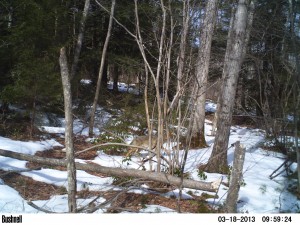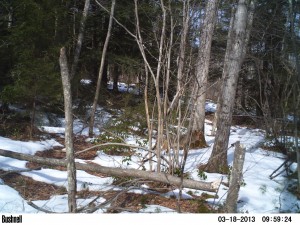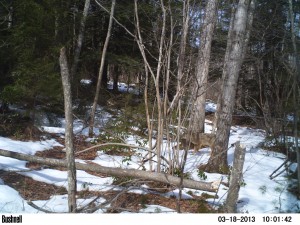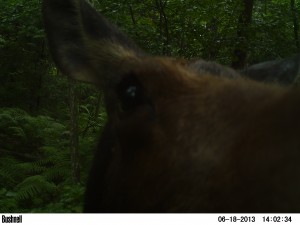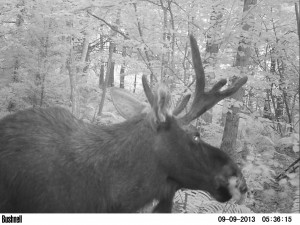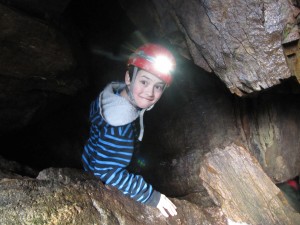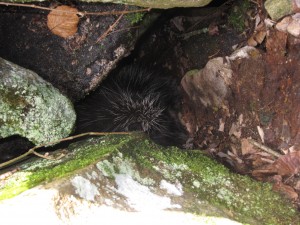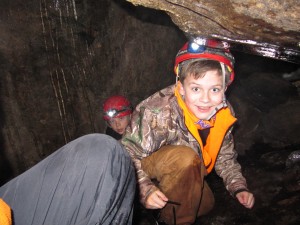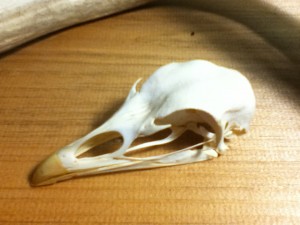What the Robin Knows
Our woods are waking up from their winter sleep, and birds are moving about in greater numbers, and even returning from warmer latitudes down south. As this happens, my ears are filled with the songs and conversations of these keenly observant creatures: what can I learn from them?
In this short video Jon Young introduces us to the concept of bird language, a form of auditory tracking and situational/landscape awareness.
A blue jay sounds an alarm several hundred yards away: the brush is thick, but now I know they’ve identified a threat.
Numerous birds are singing away: with no threats or territorial disputes to negotiate they let their guard down and chirp away. What sounds do you hear, and what are they telling you?
The Timber Doodle
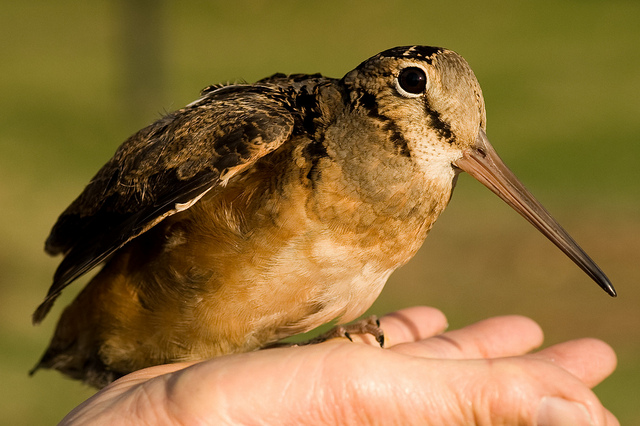
During today’s staff meeting, when James mentioned seeing a Timber Doodle, we all looked at him with looks of confused skepticism. “What the heck is a Timber Doodle?” I thought. A fan of playful jokes and pranks, we all thought that he must be putting us on. In fact, he wasn’t!
As it turns out, ‘Timber Doodle’ is just another name for the American Woodcock, the only woodcock to be found in North America. And, Timber Doodles are also signs of spring, for the male bird puts on a beautiful courtship “falling-leaf” flight display, signaling to us in the north that warmer weather is on its way.
Keep a watchful eye while in, or when passing by, open spaces and field for these small, stocky, beautifully patterned birds.
For more information, visit the Wildlife Management Institute‘s site, Timberdoodle.org And, visit our website for more information on Adventure In, Adventure Out’s tracking course, The First Science: The Art of Animal Track and Sign.
Have Experts Confirmed Mountain Lion in Winchester MA?
Not even 10 miles outside of Boston, Winchester, MA has become the latest town to experience the drama that often surrounds mountain lions in the Northeast.
While the last official sighting in Massachusetts of one of these big cats took place in the 19th century, New England residents have been seeing mountain lions, as well as their tracks and scat, for many years. But, the crux of many arguments doesn’t revolve around just their presence, but also whether or not there is a breeding population present in our woods. The general consensus seems to be: we are seeing mountain lions, but they have traveled here from other locations. In fact, the cat that was struck and killed on a Connecticut highway just under three years ago is supposed to have traveled from South Dakota based on genetic data.
Regardless, national mountain lion experts have weighed in on the current discovery of mountain lion sign in Winchester, analyzing the photographic evidence, and have concluded that there is a big cat in the area. However, state officials and local academics disagree with the assessment saying that the tracks found are most likely from another animal.
This recent New York Times article contains some helpful information about the current state of mountain lions, and this article tells us more about the situation in Winchester.
New Discovery About Maple Trees

This year, as the sap is beginning to flow, I find myself reflecting on the sweet wonder that is maple syrup. I don’t know about you, but I love maple syrup. I’ll use it almost any chance I get for a natural dose of sweetness that I know is relatively free from processing (compared to white sugar and others).
If you feel the same way, then you might be interested in this article by Joshua E. Brown about the new sap-gathering technique being pioneered by University of Vermont researchers. According to Brown, the researchers’ “new technique uses tightly spaced plantations of chest-high sugar-maple saplings. These could be single stems with a portion — or all — of the crown removed. Or they could be multiple-stemmed maples, where one stem per tree can be cut each year. Either way, the cut stem is covered with a sealed plastic bag. Under the bag, the sap flows out of the stump under vacuum pressure and into a tube. Voilà, huge quantities of sap.”
It’s too early to say whether this will become the primary method for gathering sap in the future, but don’t be surprised if you see fields of small sugar maples sprouting up on a farm near you.
And don’t forget, you can tap maples to make your own syrup. If it’s something you’d like to try, check out this guide produced by the University of Maine System. It’s packed with information that you can utilize to determine which trees to tap, how much sap you’ll be able to harvest, and even how many taps to use per tree.
Have a sweet spring!
Richard Louv on Education and Nature Deficit Disorder
In this clip from Mother Nature’s Child, journalist and author Richard Louv discusses the negative effects of modern education and its impact on both students and teachers. Referencing the numerous recent studies on children and exposure to nature, Louv jokes that “if you want your kids to get into Harvard, tell them to go outside.” He also asserts that “when we take nature away from people, we take away their ability to be full human beings.”
Today’s lesson, no matter your age: Go outside and play!
Wild Hearted boys – Session 4
This week’s iteration of Wild Hearted boys brought new (and unexpected adventure) to our motley crew. After traveling through the back woods of Leveret, racing stick boats off waterfalls and learning how to navigate with the assistance of a topographic map, the boys reached their destination – the Rattlesnake Gutter Caves!
Although you are unlikely to find the “Rattlesnake Gutter” cave’s namesake animal, we did have the surprise of meetinga live porcupine and enough discarded quills to fill up a small tupperware.
After lunch, with helmets and headlamps, the boys delved deep into these local caves, home to our previously met porcupine friend. Crawling through the ice and mud they wound their way underground and even discovered a new section of cave previously unknown to either Coyote or Chickadee!
Here are some highlights from last Saturday’s adventure:
Quadruped Gait Analysis
Food for thought for you animal tracking geeks. Enjoy!
 Adventure In Adventure Out
Adventure In Adventure Out

